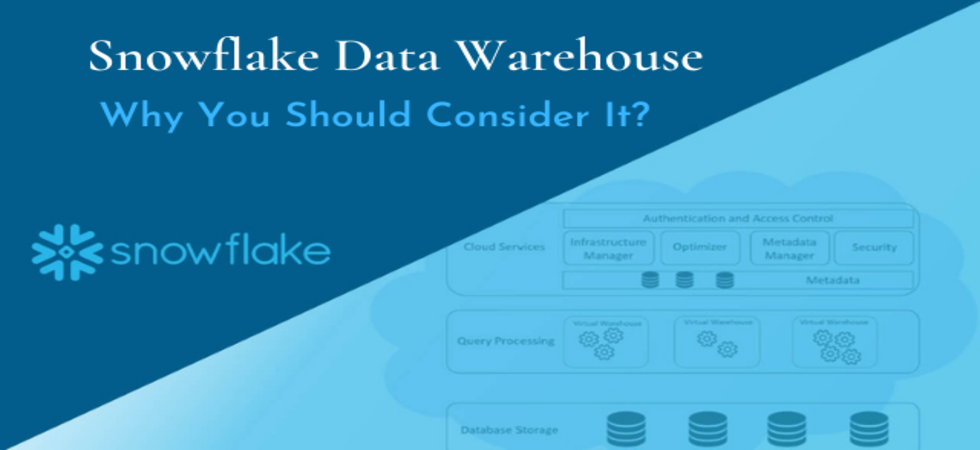Summary: The article summarizes the new data warehousing platform developed for Cloud, named Snowflake. It also explains some unique capabilities of the Cloud-based multi-clustered, shared solution while explaining why it is one of the best data warehousing platforms for businesses in different domains. Also, you chose the data science course in Bangalore to find the best solution.
How will you select a data warehouse solution that can outperform your organization’s existing platform while bringing along the performance, flexibility, scalability, affordability, and elasticity? Well, here’s a quick overview of what drives the evolution of modern data warehousing – unquestionably, it’s the Cloud.
Yes, Cloud gives access to:
- Infinite, affordable storage
- Easy to scale-up, scale-down capabilities
- Outsourcing complex Cloud management tasks to the vendor
- Option to pay-as-you-go that facilitates paying only for the computing resources being used by the business.
Problems with Traditional Data Warehouse Solutions
Legacy data warehouses completely rely upon and work over decades-old technology. They were actually designed and developed years back when the data was simpler, and the number of people who needs access to that data was relatively few. In recent years, when large volumes of data are collected across different channels and analytics has become industry standards, data warehouse becomes the major obstruction that IT teams and user’s experience.
This is what gives birth to the need of having a Snowflake multi-clustered data architecture warehousing technology.
So, what is Snowflake?
Snowflake is a data warehousing solution developed in the Cloud and for the Cloud. The intent was to offer unlimited compute and storage for seamless business functionality. It is a massively parallel processing database (MPP), which is fully relational. It works with standard SQL without the need for translating or simulating processes. In addition, it is ACID compliant.
Good to Know!
ACID is atomicity, consistency, isolation, and durability. All these elements are important to ensure timely database transactions. When a database possesses these elements- it is said to be ACID compliant.
3 Components of Multi-Cluster Data Architecture
Snowflake is a software service that is exclusively designed to take full advantage of the Cloud. It integrates compute, storage, and services such as metadata, security. It is called a multi-cluster, shared data warehouse that comprises three components.
- Storage: It’s the storage layer that helps to store data in Snowflake.
- Compute: It’s a collection of autonomous computing resources used for executing data processing operations needed for queries.
- Services: It’s a collection of system services that manage infrastructure, metadata, optimization, and security across the Snowflake environment.
An Overview of Snowflake’s Unique Capabilities
Snowflake architecture brings along different capabilities that:
- Supports all its data in one place.
- Supports all use cases with dynamic elasticity.
- Provides ease of use due to self-managing services.
Supports All Data in One System
Snowflake data warehouse allows you to store all business-critical data in a single location. Unlike traditional data warehouses that are optimized for a single data format and allow users to create data silos to store different formats, Snowflake supports storage and optimization for all data formats.
Supports Semi-Structured Data
Traditional data warehouse architectures were designed and developed for storing and processing data in relational rows and columns. Such data warehouses do not support the features required for the effective storage and processing of semi-structured data. On the contrary, Snowflake provides native support to semi-structured data that includes flexible schema data types for loading semi-structured data, automatic conversion of data for optimized internal storage format, database optimization for fast and efficient SQL querying.
Storing All Data Types in Snowflake
Snowflake takes a different approach to storing and processing diverse data types in one system without compromising performance or flexibility. The architecture allows users to load semi-structured data without pre-processing. When semi-structured data is loaded to Snowflake, it discovers the structure and attributes from data to optimize the way it is stored. Because Snowflake stores semi-structured data, its Query Optimizer has metadata information about the loaded semi-structured data. It helps Snowflake to allow access to that data.
Zero Management of Software & Hardware
Snowflake consulting expands growth opportunities for businesses as it allows analyzing data rather than focusing on managing and optimizing the infrastructure. It eliminates the need to manage the hardware and software components, and IT teams are not required to deploy, configure, patch, or update software.
Read: Banking in a Post-COVID Age: What’s New in Store?
Since Snowflake is developed for Cloud, it manages the infrastructure very transparently. Hardware, software, as well as ongoing management, is managed by Snowflake. Capacity planning is another important factor, and Snowflake takes care of scaling-up and scaling-down computing resources.
Snowflake Enables Seamless Data Sharing
Snowflake architecture simplifies the storage and sharing of data across different organizations. Users are not required to create multiple copies of data for sending them over EDI, FTP, or cloud file services. Snowflake facilitates a Data Sharing feature that allows the users to share access to data with another user. Users do not send a file; instead, they send access rights to underlying data. Users can apply role-based access permissions to data to ensure authorized access.
Why You Should Consider Snowflake?
Since Snowflake is built particularly for Cloud, it possesses the ability to address many problems that businesses find in the older data warehouse approach. These challenges include data transformation concerns, limited scalability, delays in data processing, failures in sharing high volume data, and much more. Moreover, Snowflake also addresses data concurrency issues via its unique multi-cluster shared architecture.
With Snowflake, you can move large amount of data across multiple data sources that includes Sales force, Shopify, Google Ads, Google Analytics, Stripe, etc. Snowflake consulting services provides an additional layer of security to your business-critical data, loads data faster, run multiple queries quickly, stores large volumes of data, offer to compute scalability, and guaranteed all-time access to data.
If your organization has an IoT solution database or diverse data ecosystem, you will definitely require a Cloud-based data warehouse infrastructure that offers scalability, flexibility, performance, expansion, and, most importantly, ease of use.






It’s hard to find knowledgeable people about this subject, but you sound like you know what you’re talking about! Thanks